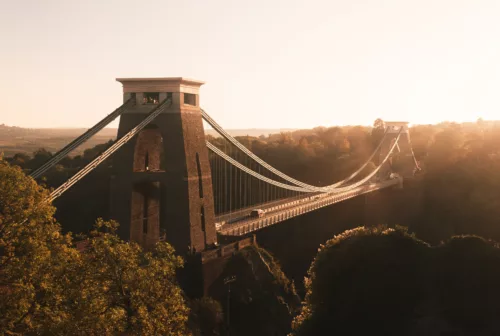Bristol's Festival of the Future City: social mobility or immobility?

For a long time, upward social mobility in the UK has been the norm. Building on what has come before and successive generations doing better than their predecessors had become an accepted pattern, seeing young people continuously grow.
For a variety of reasons, it looks like it’s now a reversing trend. At a Festival of the Future City panel event in Bristol, hosted in association with Meeting Place’s charity of the year Babbasa, the pressing challenge was discussed, which asked “what can cities do to transform social mobility?”
Hearing from both the panel of experts and young people who have been supported by Babbasa, social mobility is clearly one of society’s most significant issues. Lee Elliot Major, Britain’s first Professor of Social Mobility, outlined those born around the millennium are now more likely to experience downward social mobility. This has been exacerbated by the effects of the covid pandemic and the cost of living crisis, as well as regional disparities.
Barrister and author of ‘People Like Us: What it Takes to Make it in Modern Britain,’ Hashi Mohamed stated the tough reality of modern life in Britain: unless you are extraordinary, society tells you that you haven’t made it. The question therefore remains: what are the causes and how do we address this?
The built environment can be seen as one of the main causes of social mobility issues.
As stated by Mohamed:
- When families are unable to settle and life is more transient, due to lack of appropriate housing, children are less likely to stay in school and allow themselves to settle in certain areas.
- Social housing which was sold off through schemes like right to buy, is now being rented back by councils, costing them more money and providing a further barrier to housing.
- The planning system is also not fit for purpose. It has become a political tool, by local councillors, as opposed to something which works to serve the interests of communities.
Furthermore, the transfer of wealth through property also polarizes society, with those who inherit property or money made through the post-war property market having advantages that many in society do not.
But there is so much the built environment can do to address these issues and positively impact social mobility.
Firstly, developers and businesses can collaborate to create new areas where business can thrive. Building new homes makes areas more attractive for businesses, providing somewhere for workforces to live and relocate.
The built environment can also support education. Whilst it can’t do it all, education (both in and out of school) is still important. Our industry can support through internships, work experience and training, as well as career fairs and speaking with young people about the built environment.
Transport links are also key. By making different areas accessible through public and sustainable transport, we can support young people as they look to access areas with employment opportunities.
Whilst the built environment can create positive social impact which can support young people to become upwardly socially mobile again, some of these outcomes will be longer term.
It is organisations like Babbasa which support young people, boost their opportunities as they embark on adult life and truly make a tangible and immediate difference.
It is great that organisations like Babbasa do the things they do, but they shouldn’t have to do it alone. Within the built environment, we can do a lot more to help young people become socially mobile once more.
To find out more about the work the Babbasa team, follow this link to their website: https://babbasa.com/